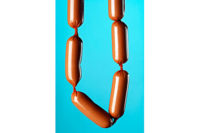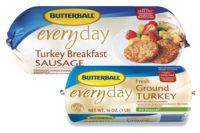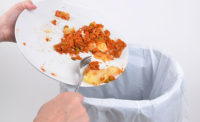If a conversation about packaging could ever reasonably include the word “sexy,” that conversation certainly would not be about chub packaging. Chubs are the ultimate role players, like basketball’s sixth man. Mostly unnoticed, getting the job done in a support capacity or sometimes as a steady, no-flash, no-hype starter. “We are an intermediate process step for a lot of products instead of a packaging step,” says an executive close to the matter. “We’re not putting the final package on. You don’t necessarily see the chub.”
As consumers, we may not see it, but we enjoy its rewards every time we tear into a loaded sandwich at home or in a sandwich shop. “All of the pepperoni in the U.S., all of the salami — also sliced ham, turkey and a lot of roast beef — have all been in a chub at one point in their processing. Before they get to the end user they have been sliced and put into a thermoformer or tray pack,” the executive says.
But being the valuable role player it is, the chub’s versatility does give it a solid place, in a limited fashion, under the lights as a starter in the retail display case. Ground beef, liverwurst, breakfast sausage and summer sausage, to name a few, all can be bought in whole chubs from the fresh meat case. The eye-opener may be chub’s share of packaging for some of these products — 30 percent of ground beef, 16 percent of ground turkey and 6 percent of ground pork — according to Sealed Air’s 2018 National Meat Case Study. In fact, that same study credits chubs with a 7 percent share of total meat case packaging. Since the first analysis in 2002, chubs’ overall share has either held steady or grown slightly with each survey. It is putting up some solid numbers for a part-time starter.
That same executive cast his thoughts to more current opportunities: “As people become more affluent, they are feeding better things to their pets. You have the move from shelf-stable dry food to refrigerated real, whole meat in a chub. Pet food is an interesting opportunity for the chub package.” On its surface, that certainly makes some sense. The number of pet-owning households in the U.S. has risen to 84.6 million. Put into perspective, that is 68 percent of all households, according to the 2017 American Pet Products Association (APPA) National Pet Owners Survey. “The price points and margins are excellent because it’s a value-added, premium product. It’s a win-win because the chub makes for considerably lower entry costs versus a canning line and smaller processors can compete with their products against the big brands in the refrigerated display case. All they need is a chub machine and a stuffer, and away you go.”
The chub’s cost effectiveness and dependable performance also are well suited for emerging markets, according to the executive. In Latin America and Asia — where areas of developing middle classes are shifting toward more urban bases, becoming less rural and farming centric — rising living standards drive more protein consumption from meat, especially as cold chains evolve. “It’s really a perfect solution for developing countries.”
There it is: the classic role player. Versatile, but does not break the bank. The chub is never going to be the star, but it has time-tested, old-school reliability. NP






Report Abusive Comment